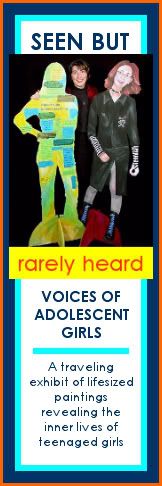
This is William's depiction of the Anointing of Jesus in his "It's in the Book" project. This is the scene in which an unnamed woman anoints Jesus feet and dries them with her hair.
Luke 7:37-38
And a woman in the city, who was a sinner, having learned that he was eating in the Pharisee’s house, brought an alabaster jar of ointment. She stood behind him at his feet, weeping, and began to bathe his feet with her tears and to dry them with her hair. Then she continued kissing his feet and anointing them with the ointment.
Here are some examples of art works depicting this scene.

This painting by Dirk Bouts from the 1440s shows the entire scene at the house of Simon the Pharisee. It portrays the event quite literally as the woman is standing at Jesus’ feet rather than kneeling, as would be a more obvious way for her to anoint his feet. You can clearly see the condemnation of Simon (the only one wearing shoes) as he cranes his neck to look with astonished disapproval at her. He seems to be central figure of the painting, theologically pointing out the hypocrisy of those who choose to cast judgement rather than seeing their own need for forgiveness. In typical Jesus style, he looks with compassion upon the woman and offers a benediction hand symbolizing the forgivenss he is bestowing upon her. The arrangement of the figures at a laid table recalls two other themes from the life of Christ, the Last Supper and the Miracle at Emmaus, incidents which were frequently represented in painting.

This etching by Jeremy Taylor (1613-1667) shows a more desperate woman who plays yet more prominently in the scene by her place in the foreground. She appears to have crawled to Jesus in her attempt to gain forgiveness. It gives us an evocative portrait of repentance. The disapproving Simon points down at her yet does not look at her or break his stoic facial expression as if to say the woman is not worthy of even showing disgust.

This is 20th century icon used as an object to inspire deeper worship. Our attention is most obviously drawn to the woman with her bright red outfit and her place in the foreground. Jesus looks approvingly despite the others' disapproval. Here again, we have a painting to inspire repentance.

This is a drawing by Vallotton Annie Vallotton from the Good News bible of 1976. In this simple line drawing, we see the major action of the scene with Jesus' sandal removed, the oil spilling all over and her long hair flowing recklessly. You can sense by her gesture how anguished she is. Contemplating it can give us a sense of our own need for God's grace in Jesus.
For William's version of this scene, we decided to isolate the characters to just Jesus and the woman and thereby focus on the repentance and forgiveness rather than the judgement of Simon and the other Pharisees. We placed them in a home, which is where the scene takes place. Jesus—wearing the traditional colors of blue and white—reclines comfortably in a red chair (another traditional color for Jesus). He looks upon the woman with tranquility and kindness.
The woman crouches at his feet with her long hair flowing over his foot. To contemporize it, she uses an electric foot bath instead of ointment. The point of view is down low—right at her level. This is to help the viewer relate with her and sense their own need for coming to Jesus with humility and trust, believing that he longs to bestow forgives upon us.








No comments:
Post a Comment